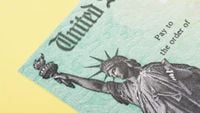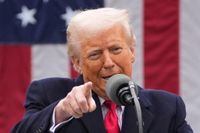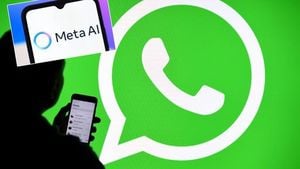In a significant move towards digitization, President Donald Trump signed an executive order on March 25, 2025, that mandates the federal government to modernize its payment systems. This order, aimed at enhancing efficiency and reducing fraud, will eliminate the use of paper checks for all federal payments, including tax refunds, by September 30, 2025.
Starting this fall, the Secretary of the Treasury will no longer issue paper checks for federal disbursements and will also cease accepting paper checks as payments. The executive order highlights the increasing risks associated with traditional payment methods, noting that Treasury checks are 16 times more likely to be reported lost or stolen compared to electronic funds transfers (EFT).
As part of the transition, the executive order outlines exceptions for specific cases. Individuals without access to banking services or electronic payment systems will still be able to receive payments through paper checks in certain situations. Additionally, emergency payments where electronic disbursement could cause undue hardship will also be exempt from the new rules. National security and law enforcement activities that necessitate non-EFT transactions will be considered as well.
Ed Zollars, a certified public accountant based in Phoenix, commented on the executive order, stating, "This executive order signifies a significant shift in how the federal government processes payments, both incoming and outgoing, with a clear mandate to move towards electronic methods by Sept. 30, 2025." He emphasized the importance of preparing clients for the near-complete elimination of paper checks for federal tax refunds and ensuring they understand the available electronic payment options.
The White House has emphasized that the continued use of paper-based payments imposes unnecessary costs, delays, and risks. The executive order states, "The continued use of paper-based payments by the Federal Government... imposes unnecessary costs; delays; and risks of fraud, lost payments, theft, and inefficiencies." In fact, mail theft complaints have surged since the COVID-19 pandemic, leading to increased scrutiny over the safety of traditional payment methods.
In 2024 alone, maintaining the physical infrastructure and specialized technology for digitizing paper records cost the government over $657 million. This financial burden further underscores the need for a shift to more secure and efficient electronic payment systems.
Tax practitioners are already advising their clients on this impending change. Bob Kamman, a tax attorney in Phoenix, mentioned that while he encourages clients to utilize direct deposit for refunds, he has concerns about the exclusive use of electronic payment methods. "I have clients in their 70s and 80s who don't own a computer, or even a cell phone," he stated in an email. "And some of those who do, have been scammed."
The executive order does outline acceptable options for receiving payments, including direct deposit and prepaid card accounts. It also mentions the use of debit and credit cards for payments, as well as the desirability of adopting newer methods like digital wallets and real-time payment systems.
As the deadline approaches, the federal government is gearing up for this monumental shift. The potential impacts are vast, as millions of Americans will need to adapt to new payment methods for their tax refunds and other federal disbursements. The move towards a cashless system reflects a broader trend in society, where digital transactions are becoming the norm.
While the transition is expected to streamline processes and enhance security, it also raises questions about accessibility for those who may be less familiar with technology or lack access to the necessary resources. As the government prepares for this change, it will need to ensure that all citizens can navigate the new landscape of electronic payments effectively.
The executive order represents not just a shift in payment methods, but a broader transformation in how the federal government interacts with its citizens financially. With the push for modernization, the hope is that the government will be able to provide more efficient services while minimizing the risks associated with paper-based transactions.
As the September deadline looms, many are watching closely to see how this transition unfolds and what measures will be put in place to support those who may struggle with the change. The implications of this order will be felt not only by taxpayers but also by the IRS and the Treasury Department, which will need to adapt their systems accordingly.
In conclusion, the executive order signed by President Trump marks a pivotal moment in the evolution of federal payment systems, steering them towards a more digital future. As the nation prepares for this significant shift, the focus will be on ensuring that the transition is smooth, secure, and inclusive for all Americans.





